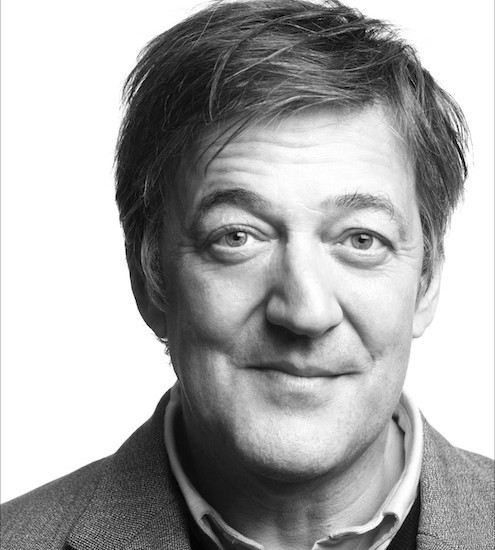See our Last Chance to See features page for more on Stephen’s adventures.
Twenty years ago, writer Douglas Adams and the zoologist Mark Carwardine set off in search of some of the most endangered species on the planet to produce the timeless classic book Last Chance to See.
Now Stephen Fry – who by chance house-sat for Douglas while he was on his epic adventure – is realising the dream himself, as he joins Mark in what could be the final outing to capture some of these species on camera in the TV version of Last Chance to See.
Across six special weeks, Stephen will be engaging in what he calls an “exhausting, exhilarating and exasperating” journey, but one that he wouldn’t have missed for the world, as he tracks the progress of the Aye-Aye in Madagascar, the Blue Whale off the coast of Mexico, the Kakapo in New Zealand, the Northern White Rhino in Uganda, the Komodo Dragon in Indonesia and the Amazonian Manatee in Brazil.
Stephen admits that while he does love animals, he’s not so keen on the fact that to see them in the wild, one needs to spend so much of the time trekking and camping to where they are. But it’s a sacrifice he’s prepared to make to share some incredible moments – his first sight of a blue whale fluking (raising its tail vertically in the air) stirring “almost unbearable” excitement; meeting the world’s smallest primate, Madame Berthe’s Pygmy Mouse Lemur – “sheer, unadulterated cute” – and watching tiny turtle hatchlings rushing across the sand to reach the sea – “one of the great evenings of my life”.
Although Last Chance to See introduces some rare and wonderful specimens, as with the original book and radio series, there is a serious message. Currently almost 8,500 species are officially recognised as endangered by extinction, and it’s not getting any easier as habitats continue to be destroyed, sometimes, ironically, so that we in the West can claim we’re going green.
Rainforest is being cleared to create palm plantations for bio-fuel, for example, leaving whole species without a home, and releasing huge amounts of carbon dioxide in the process. Mark says he found this particularly noticeable in Madagascar, where first time round, along Baobab Alley, the whole area was jungle – now one small strip is all that remains.
One species the pair couldn’t revisit was the Yangtse River Dolphin, now officially extinct, though Mark still has photographs from his previous encounter. And Stephen finds that sometimes it is just a few people standing between the survival of a whole species and its complete demise. Mark was cheered that in every case, people he and Douglas met 20 years ago are still there, still passionate about their cause.
In New Zealand they met up with Don Merton, who has dedicated his life to helping the Kakapo, a large flightless parrot almost wiped out when settlers introduced predators such as rats and stoats, since its primary defence, says Mark, is “to sit and wait and see what happened”. Mostly what happened was they were eaten. Just 40 remained when Mark met Don last, but with astonishing dedication and care, 90 now exist. It’s a long, slow crawl back from the brink of disaster.
Mark is delighted to find that the book is still stirring people to action. Even now, Don says, he receives notes from people saying they have just read Last Chance to See and enclose money to help save the Kakapo.
Stephen acknowledges that he is more aware than ever that a price has been paid by some animal, somewhere, that allows him to be a “creature of the modern world” and all that goes with it.
And he and Mark hope the programme will go a little way to educating people in realising what they have to lose – a big task however when it comes to species such as sharks or seahorses, which south east Asian cultures believe have health-giving properties. The pair browse a market in Borneo, where thousands of tiny seahorses are packaged up to be used in a supposedly potent broth, while Mark notes that the sharks, stripped of their fins to make soup, are rather small – indicating that all the larger ones have already been fished out. He admits it’s an uphill struggle with “one-and-a-half-billion people believing in these products”.
Stephen, who has now signed up as an ambassador for Flora and Fauna International, hopes the programme can make a difference. “Wouldn’t it be a shame, quite literally shaming, if all we leave to the people of the future are photographs in place of thousands and thousands of some of the most extraordinary, complex, baffling and sometimes hilarious creatures that ever walked upon the Earth,” he says.
For more about the series visit the comprehensive BBC Last Chance to See website



